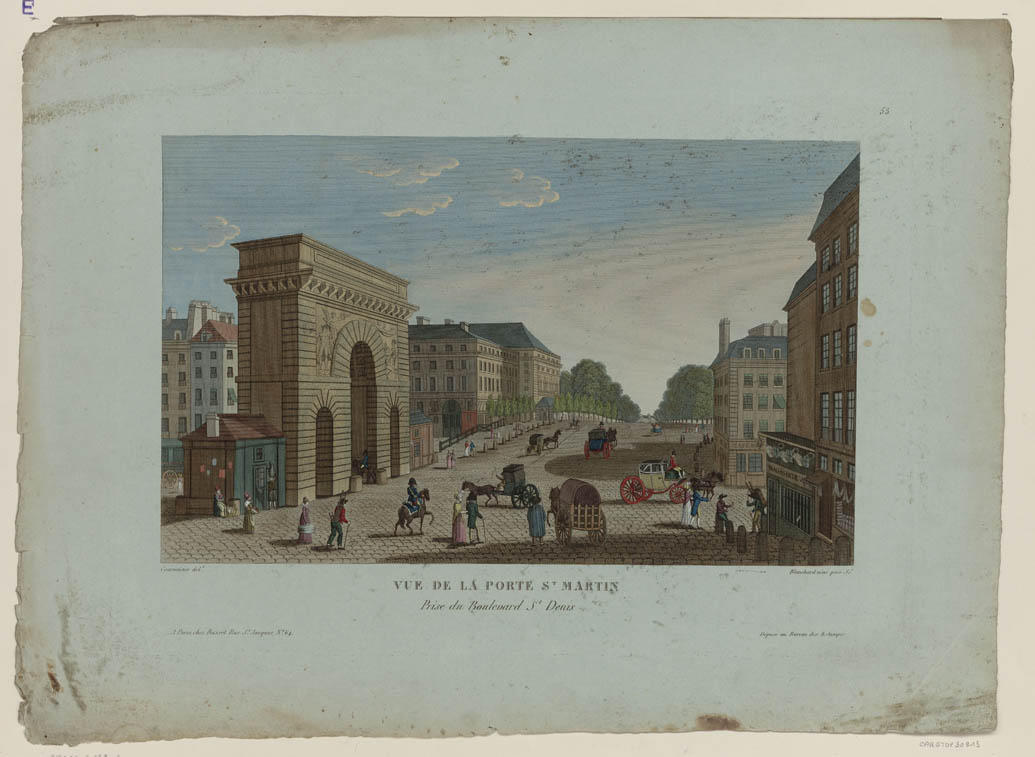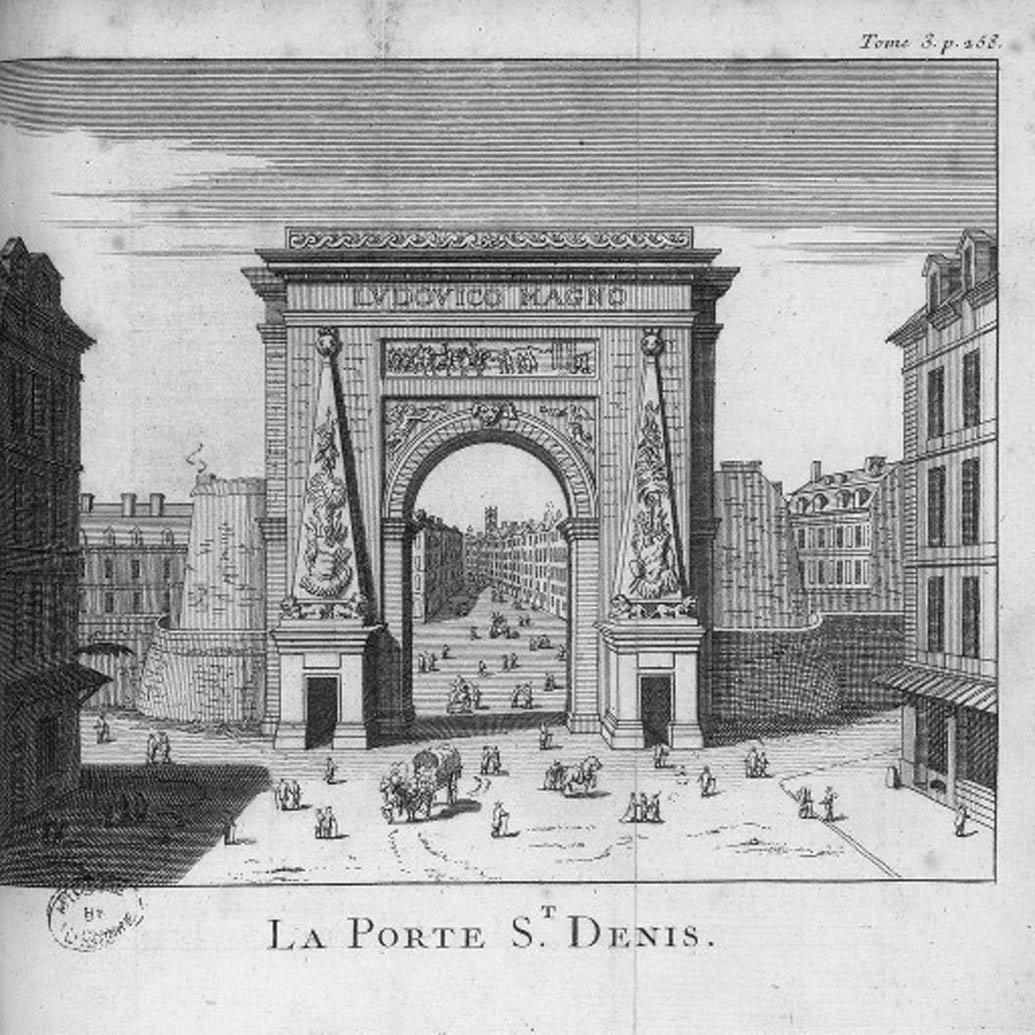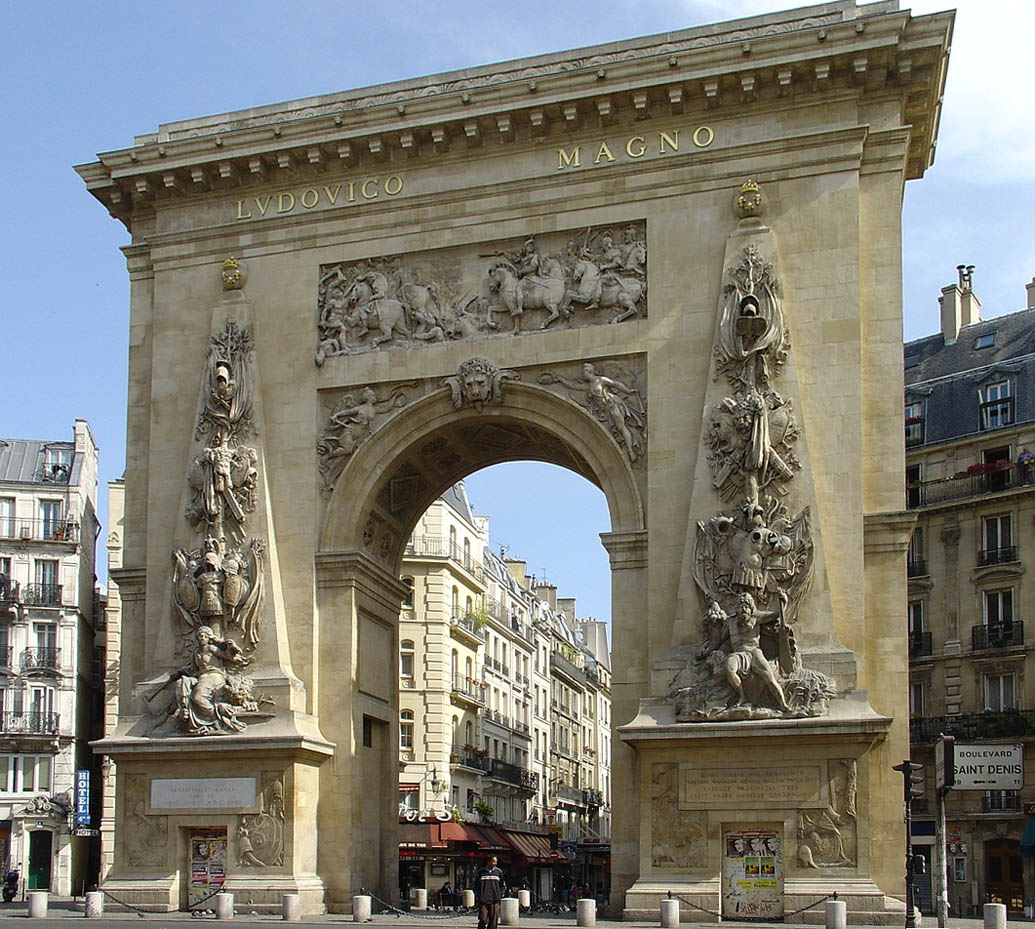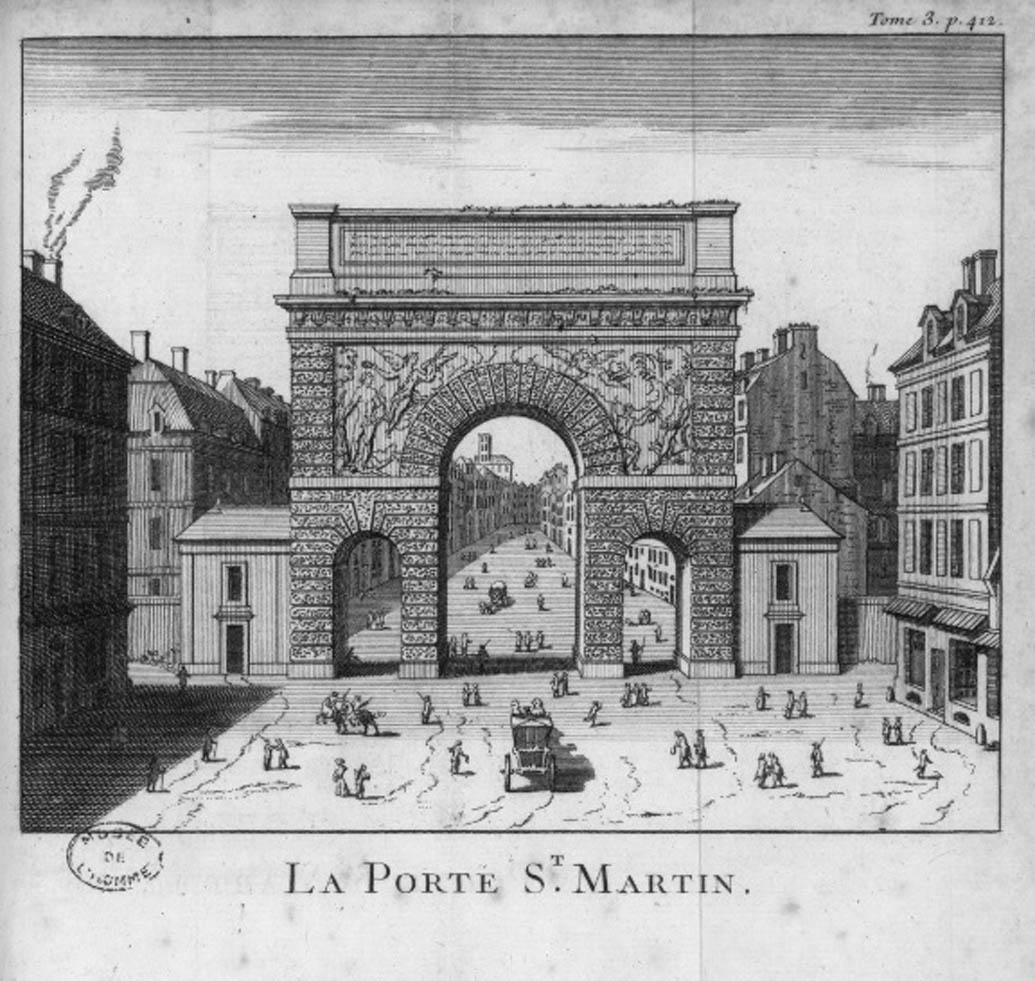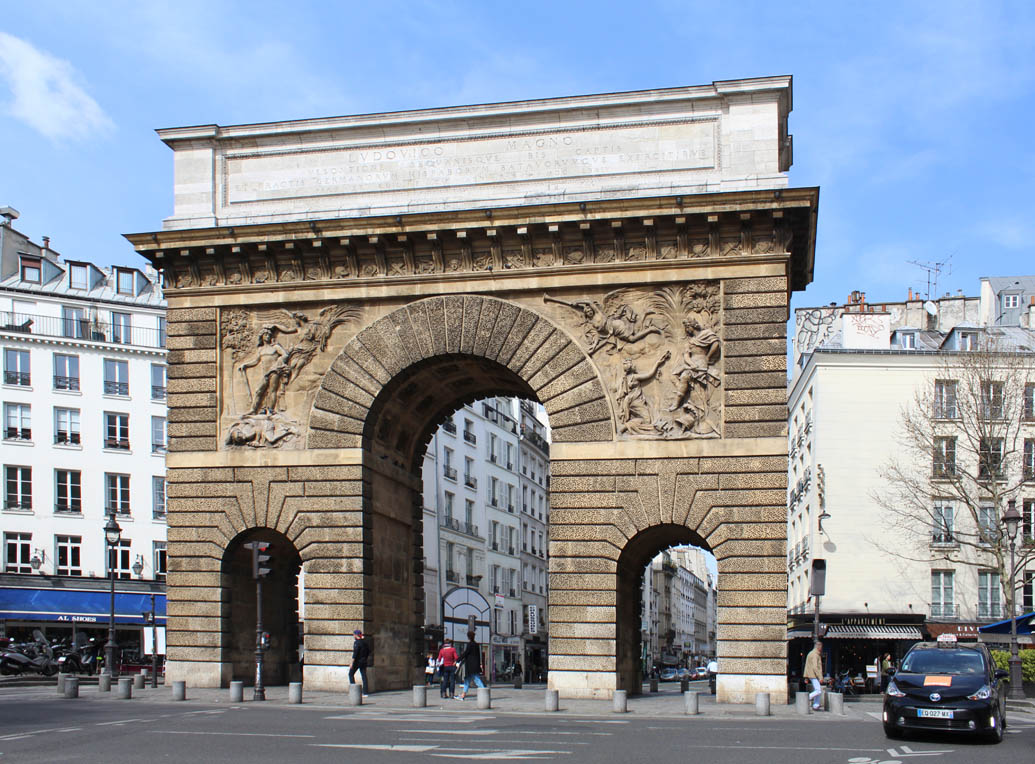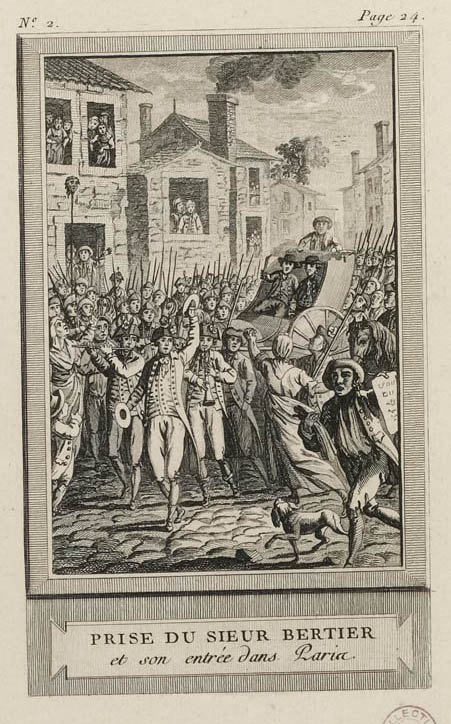Public Places during the Revolution
Located along the boulevards, as well as between the center of Paris and the northern neighborhoods, the Saint-Martin and Saint-Denis gates are no longer the cold monuments that they once were during the Ancien Régime: seen as public buildings, they have been, since the Revolution, used by Parisians. Hollow and flanked by small pavilions, these two gates were used to house a variety of shops: vegetable and beverage merchants, as well as hardware stores relocated here. The Ministry of the Interior also dreamed of housing soldiers here in order to ensure public order. It should be mentioned that as of 1789, they became sites for gatherings, debates and protests, specifically during periods of unrest.
Location
ItinerarySaint-Denis Gate, 24-26 boulevard Saint-Denis
Suggestion
Temple and its Neighborhood
Curtius and Madame Tussaud
To find out more…
The Saint-Denis and Saint-Martin gates: inherited from the Bourbons
According to legend, before dying, Louis XVI was worried about the fate of one of the capital’s gems: the Saint-Denis gate. If the anecdote was imagined, it does contain a certain amount of truth: concerned about improving traffic and wanting to forget the monuments of the Ancien Régime, the revolutionaries destroyed most of the Paris gates. However, they decided to keep both the Saint-Martin and Saint-Denis gates, due to their patrimonial value. However, since passersby could no longer stand seeing inscriptions and sculptures dedicated to the glory of Louis XIV, it was decided to replace the former and slightly touch up the latter in order to transform the Sun King into a Republican Hercules. Scaffolding was erected, but the renovations were never carried out.
End of the road for Bertier de Sauvigny
It was not a good thing to have been given important responsibilities during the Ancien Régime! On July 22, 1789, Bertier de Sauvigny, the intendant of the generality of Paris, was arrested at the Saint-Denis gate. He was suspected of having tried to starve the people. From his stopped carriage, he was forced to look at the head of his father-in-law Foulon de Doué, which was stuck on the end of a pike. Hated by the people because he was named minister instead of the popular Necker, Foulon was also suspected of having organized the bread shortage. Arrested in Viry-Châtillon, the old man said to Parisians: “let them eat hay!” What came next resembled the Stations of the Cross: the insurgents stuffed his mouth with a handful of hay soaked in vinegar and rubbed his face with stinging nettles, before killing him and cutting off his head. His son-in-law would receive the same fate a few hours later on July 22nd, on the Place de Grève.


